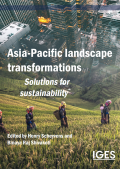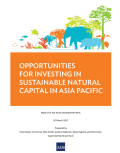This 2018 edition of the Joint Report on Multilateral Development Banks Climate Finance was prepared by the European Bank for Reconstruction and Development, together with partners the African Development Bank, the Asian Development Bank, the European Investment Bank, the Inter-American Development Bank Group, the Islamic Development Bank and the World Bank Group.
An India Advisory Council of the UNEP India Inquiry was convened by the Federation of Indian Chambers of Commerce and Industry (FICCI). This report, Delivering a Sustainable Financial System in India highlights key proposals emerging from their discussions for aligning the Indian financial system with sustainability.
In the Indian context, they call for the development of a more robust and resilient ‘sustainability-oriented market framework’ focused on banking, institutional investment, public finance institutions and foreign direct investment. They called for policy and regulatory innovation in five areas:

This report examines the cost of economic growth on land, biodiversity, and ecosystem services in Asia-Pacific. It argues that creating a vision of sustainable landscapes can guide policymaking and administration towards more effective cross-boundary management of interdependent ecosystems.

This report presents how investments in natural capital can benefit the people and economies of Asia Pacific. It looks at the justifications for increased investment, the priorities for natural capital investment in specific ecosystems, and how these investments may be financed.
This assessment, Global Environment Outlook 6: Regional assessment for West Asia , paints a comprehensive picture of the environmental factors contributing to human health and well-being at the regional level, and highlights the complexity of the interlinked environmental, social and economic challenges now confronting decision makers.
